Classic Italian Panettone Recipe
Embark on a culinary journey into the traditional Italian cuisine with this exquisite Panettone recipe! Ideal for gracing your Christmas table, this Panettone cake is so irresistibly delicious that it’s guaranteed to become an essential part of your holiday traditions, all year round. Once you’ve tried it, a holiday season without it will be unimaginable!
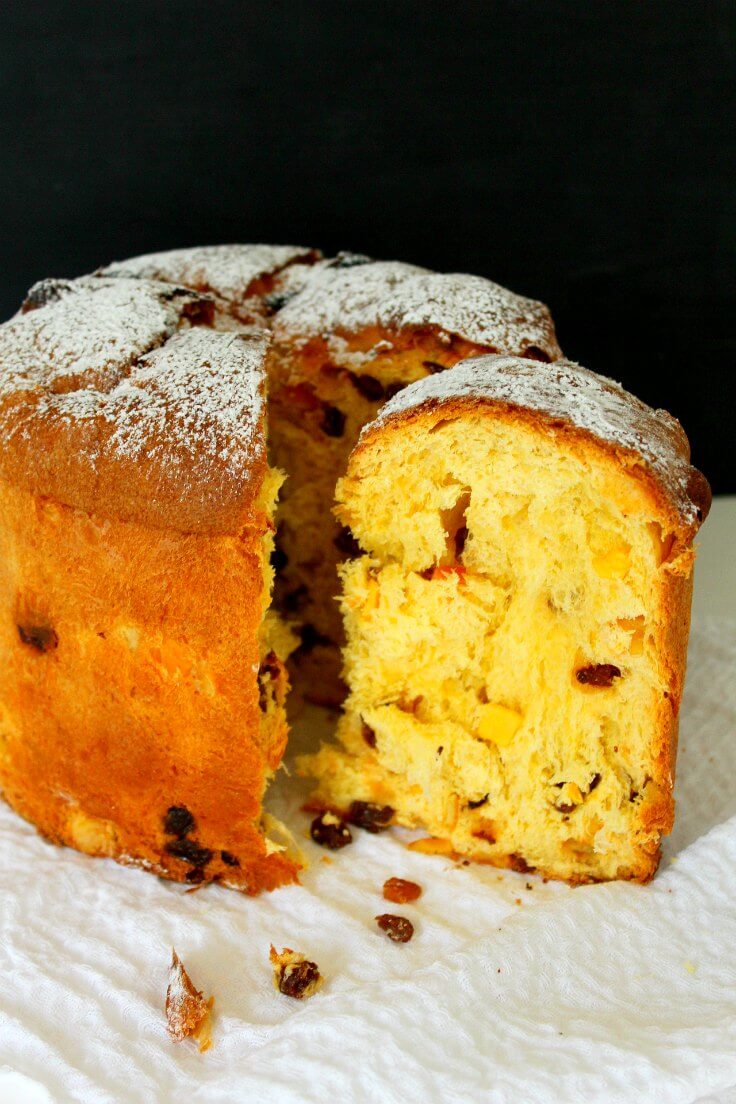
I absolutely adore whipping up easy and tasty desserts, like this yummy Panettone recipe! It’s traditionally an Italian Christmas bread cake, brimming with texture and packed with raisins and candied orange. This simple Panettone cake is just so delicious and bursting with flavors that you’ll want to make it a year-round treat. I know I can’t get enough of it, which is why I’m excited to share this recipe with you now.
What I love most about this Panettone bread is the texture. When it comes to cooking and baking, playing with texture is half the fun, and the flavor is the other half. Packed with raisins and candied orange, this Italian Panettone recipe has both. There are plenty of ways to modify this easy Panettone recipe, so don’t be afraid if you don’t care for raisins or candied orange.
How to make Panettone recipe
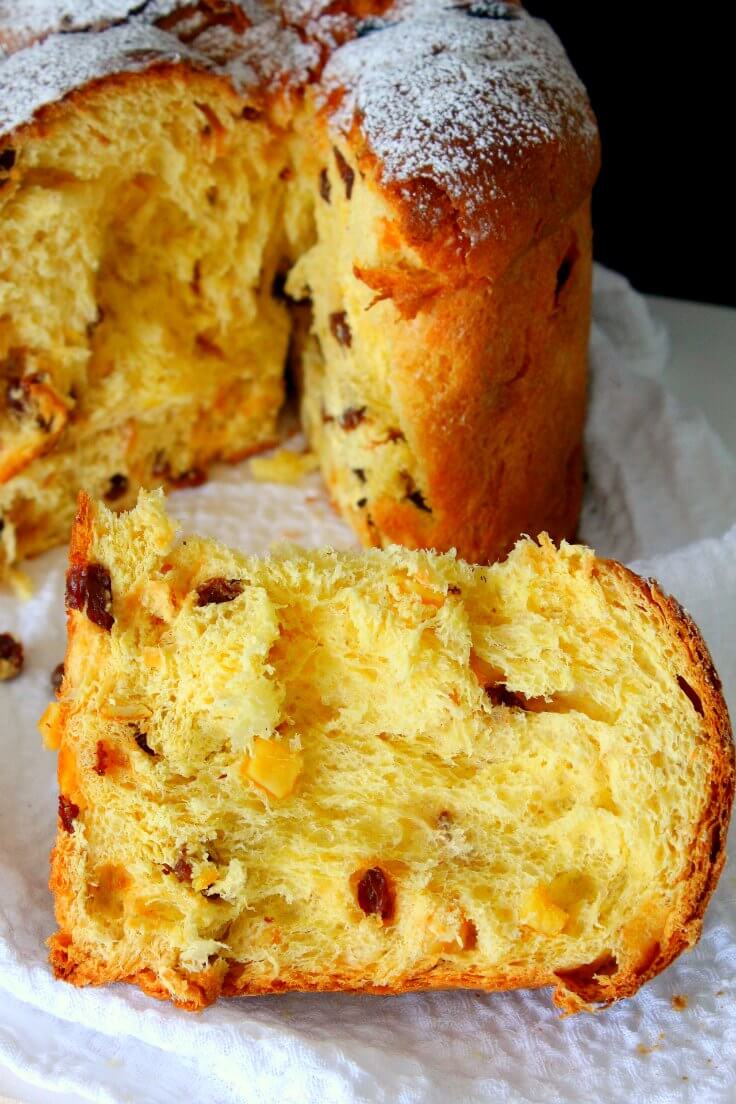
Ingredients:
For the Panettone dough
- 4 tbsp warm milk
- 1 tbsp dried yeast
- 8 tbsp sugar
- 2 sticks butter, room temperature
- 5 large eggs, beaten
- 2 tsp vanilla extract
- grated zest of 1 lemon
- grated zest of 1 orange
- 3 1/2 cups flour, plus extra (1/2 cup to 2/3 cups more) – see notes below
- pinch of salt
- 7 tbsp raisins (I like using golden raisins for their beautiful color and flavor)
- 3 tbsp rum extract
- 8 tbsp candied lemon and orange peel, finely chopped
- butter for greasing
For the topping
- egg wash
- 1 tbsp icing sugar
- more icing sugar for dusting
Equipment you will need
- Panettone cake pan or (Panettone mold) or 8″ deep cake pan
- large mixing bowl
- silicone brush
- large spoon
- hand mixer or stand mixer
- small saucepan
Notes
Start with 2 and 1/4 cup of flour. Initially the dough will resemble a lot like cake batter but not exactly, it’s rather a hybrid between dough and batter. It’s very sticky and hard to knead. But as you continue to work on your dough you’ll be adding lots of more flour. I have a hard time establishing exactly how much extra flour you will need to add by the end of the process as I end up using different amounts every single time I make this cake, mainly because of the size of the eggs which are never the same.
Dusting process
In the initial stage, you might need to add up to 1/4 cup more if your eggs are super large (but not more as you will get a different kind of dough and your panettone will be dry instead of fluff and moist). Then you will be dusting flour a lot throughout the entire process: you need to dust the bowl where you prepare the dough so you can remove the dough from the bowl and move it to the counter to knead.
You also need to dust your hands to help the dough come together and remove it from the bowl. You’ll need to dust the working area so the dough doesn’t stick. While here, you’ll need more dusting for your hands so you can knead the dough. Then you move the dough to a bowl and wait for it to rise. Next you’ll move the dough from the bowl to the counter top to knead one more time and incorporate the fruit. So again, you need more dusting for the table and your hands. You might end up adding up to 3 and 2/3 to 4 cups of flour in total.
How the dough is supposed to look like
Adding flour bit by bit while kneading is what makes the bread so soft and gives it that special texture. This dough is not supposed to look like bread dough but also this is not cake batter either. It’s a very soft, sticky, elastic dough that is a bit harder to handle than any other dough until it comes together. The stickiness is due to the large amount of butter added. But this is what makes this cake so special: incredibly soft, fluffy and moist like no other sweet bread or cake.
Instructions to bake the Panettone cake
Prepare the yeast
- Grease a Panettone pan with softened butter or spray panettone paper molds with baking spray.
- Place the warm milk in a small bowl and add the yeast and 1 tsp of sugar, mix well and leave for a few minutes so the yeast “feeds” on sugar.
- Put the remaining sugar in a large bowl and beat together with the butter and vanilla extract, using a hand mixer, until light and creamy. Do not skip this step, make sure the butter is well creamed and the sugar is completely dissolved and incorporated. Otherwise, the inside of your cake might drop when baking.
- Add lemon and orange zest and mix.
- Add the eggs a little at a time until all are well incorporated.
- If the mixture starts to curdle, add a tablespoon of the flour and beat this in with the eggs.
Make the dough
- Place the flour in a large bowl and mix with a pinch of salt and make a well.
- Add the yeast mixture you made above (this is not a sourdough starter) then the butter and egg mixture, folding in with a large spoon to make a soft dough. Alternatively you can use the bowl of a stand mixer and a dough hook set on low speed.
- Knead for 5 mins in the bowl until the mixture starts to come together and is pretty sticky.
- Put the dough onto a floured surface and knead for a further 10 mins, until everything has come together and you get a soft, stretchy dough. Add a light sprinkling of flour to the surface and your hands as you go to stop the mixture sticking. You will end up adding a lot more flour with this process (see notes above).
Let the dough rise
- Place in a lightly greased bowl and cover with plastic wrap; keep in a warm place for 2 hrs or until doubled in size.
- Place the raisins in a small saucepan with the rum extract and heat on low for about 5 mins or until the fruit has absorbed the liquid; set aside to cool.
- When the dough is risen, tip it out onto a lightly floured surface and knead for another 5 mins. Gradually knead in the soaked raisins and chopped candied peel. Shape the dough into a ball and pop into the prepared Panettone pan. If using a cake pan, wrap a layer of baking paper or parchment around the outside of the tin, to come up about 2″ above the rim, and secure the paper with string. This will help contain the dough as it rises.
- Cover lightly with plastic wrap and leave to rise for another hour until it has risen to the top of the pan or paper.
Bake the cake
- Preheat the oven to 350 F.
- Mix together the icing sugar and egg white and gently brush over the top of the Panettone.
- Place the Panettone in the oven and bake for 50 – 55 mins or until golden and risen. Insert a skewer into the middle of the cake to test if done before removing from the oven.
- Leave to cool in the pan for 10 mins before turning out onto a cooling rack.
- Leave to cool completely before dusting with icing sugar.
- Cut into wedges to serve.
Tips to prevent the panettone from collapsing while cooling
Pierce the cooling bread with two long metal or wooden skewers about 3-4 cm from the base, and hang it upside down to cool completely. This will prevent the bread from collapsing while cooling.
Here are a few other tips to keep in mind while working on making the best Panettone recipe:
- Using a panettone pan or panettone paper can help create rounder shapes.
- When baking, cover the top with foil towards the end, to prevent it from getting too brown.
- To prevent the top from cracking, score it with a sharp knife before baking.
- To keep it fresh for up to one week at room temperature, wrap it in plastic foil or place it in a resealable bag.
Panettone recipe variations
There are plenty of ways to elevate this classic recipe and put your own spin on it.
- Of course, you can always opt for the traditional approach by serving it as a plain cake.
- For chocolate lovers, add in a smattering of chocolate chips for extra flavor and melty goodness.
- You can also make the bread more fruity by adding in a few other candied fruits.
- Some people like to add a drop of mascarpone cheese to make it taste even more “Italian.”
After a few times of making this recipe, you’ll begin to figure out what you like best. That’s the beauty of a simple recipe—there’s a lot of room for you to get creative and make it your own.
How to serve Panettone bread
While most people like to bake their cake with dried fruit and serve it as a dessert, this cake can have other delicious uses:
- Bake it simple, with no dried fruit added and serve at breakfast, simple or with cream cheese.
- Use it as a base for French toast.
- Serve this cake with fried eggs instead of bread.
- Slice as bread and use it in grilled cheese sandwiches. Mixing sweet and savory foods is perfectly fine and so delicious!
- Serve as a snack, drizzled with honey or chocolate syrup or sprinkled with icing sugar and cinnamon powder.
- Use the leftovers to make bread pudding.
What to serve panettone with
Panettone is most commonly served during the holidays in Italy, usually around Christmas time. It is typically served as an accompaniment to coffee or espresso and is sometimes enjoyed as part of a dessert course after dinner.
The panettone is so versatile that it can also be used to make French toast and panettone bread pudding.
A spread of Nutella goes well with this cake, especially when served with a cold glass of milk.
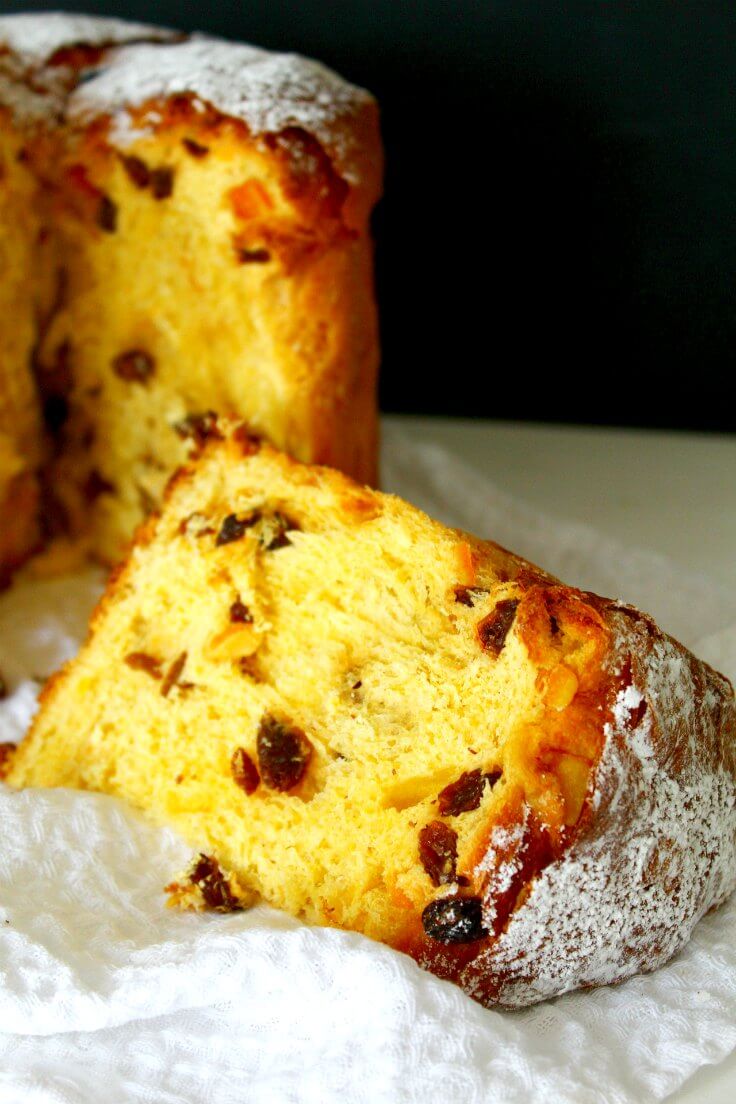
Q&A you might find useful
What is a panettone cake?
The Panettone cake recipe is basically a sweet bread that is baked in a round pan, which gives it a lighter-than-air fluffy texture. There are also plenty variations of the classic recipe, some including a plain cake, chocolate or other candied fruits and usually served next to hot beverages or wine. Some even add a drop of mascarpone cheese to make it taste even more “Italian”.
Here’s the thing about this Italian Panettone: It looks like it would be hard to make, but in reality, it’s one of the easiest desserts you’ll ever prepare. As long as you follow the instructions and muster up a good dose of patience (it’s time-consuming!), you’ll be a master of the Panettone bread in no time.
How do you pronounce “panettone”?
The Italian panettone is pronounced “pan-eh-toh-neh”. In English it’s pronounced “pa-nuh-toe-nuh” or “pa-nuh-toe-nay”.
What does panettone mean in Italian?
Panettone is derived from panetto (an Italian word meaning “a small loaf of bread”). Adding the “one” at the end of the panetto makes the word translate to a larger version of panetto (large bread) and has become a beloved classic cake throughout Italy. The name panettone literally translates to “big bread” in Italian.
Is panettone a cake or bread?
Believe it or not, panettone is a hybrid of both cake and bread. It has the texture of light and airy sweet bread but with the flavor of a classic fruit cake. The traditional panettone recipe uses raisins, candied citrus peel, lots of butter, eggs, and flour to create this unique flavor combination. The dough is also left to rise multiple times so it has a lighter and airier texture.
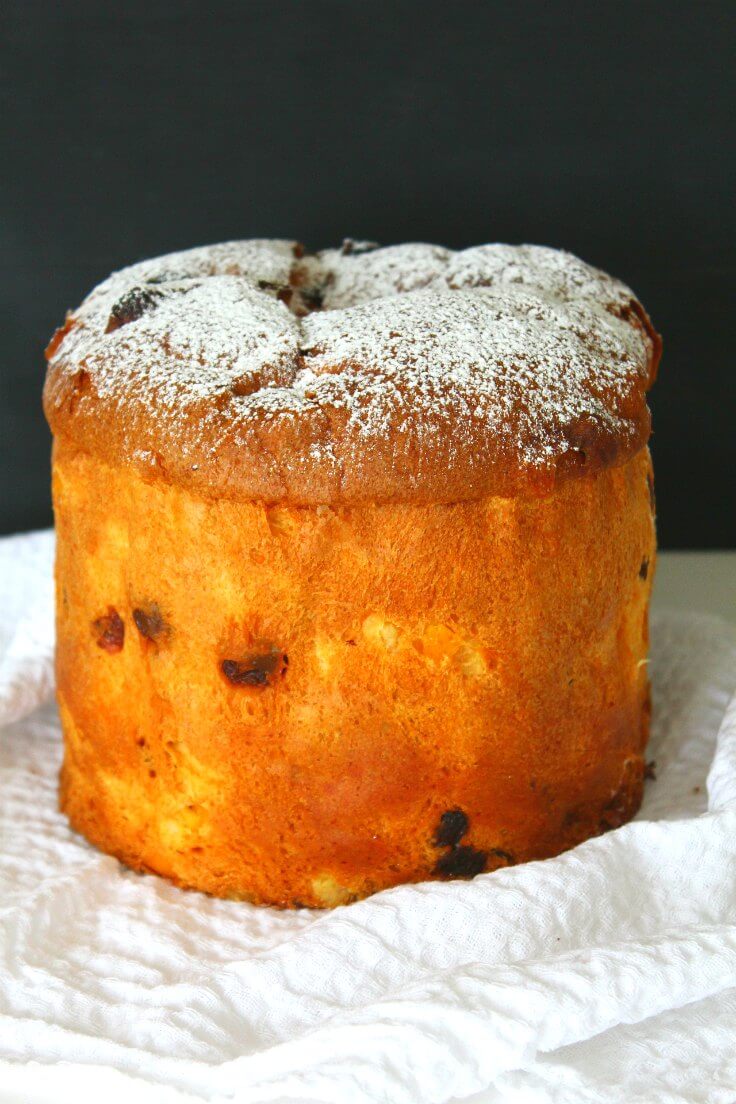
When was the Panettone recipe created?
This recipe goes way back—back to the Renaissance period. We all take bread for granted now, but during this time (roughly 14th century), wheat was a hot commodity. There wasn’t much of it, so it was only used for special occasions… Christmas was one of those occasions. The tradition of making bread around the holidays began there, and Panettone entered the scene in 1839… as far as we know.
Actually, this cake seems to be much older, dating back to the Roman Empire. The romans used to add honey to sweeten a type of leavened cake, so this may have developed into the actual Panettone. Or maybe Pandoro? We’ll talk about Pandoro a bit later.
In 1839, the Italian-Milanese dictionary had an entry under “P” for Panettone, described as a kind of bread garnished with butter, eggs, sugar and raisins or sultanas. Why Panettone? The title comes from the Italian word “panetto,” which means a small loaf cake. Pair that word with “one,” which changes the meaning to “large cake.”
Other theory says that the name comes from the Milanese expression “pan del ton” (“cake of luxury”), as it uses many expensive ingredients like butter, sugar or raisins.
Panettone is found all over Latin America: Chile, Argentina, Brazil, Colombia, Ecuador, Bolivia, Uruguay, Venezuela, Peru or Paraguay. Italian immigrants brought the recipe with them back in the 19th century and it quickly conquered the taste of everyone around.
Can panettone cake be toasted?
Yes! This classic Italian Panettone can be toasted using a classic panini press, on the stovetop in a pan with butter and sugar, in your toaster or even just in the oven. Toasting panettone enhances the flavor of all its ingredients – candied fruits, raisins and spices – and gives it an irresistible crunchiness. It’s a great way to enjoy this classic panettone with a spread such as Nutella and make it last longer.
What is the difference between Panettone and Pandoro?
You may have heard of Pandoro, especially when searching for Panettone recipes. They are both delicious Italian sweet breads, but made in a different manner:
- Panettone is very time-consuming in order to make it so airy and fluffy. The dough would rise and collapse three times for many hours before baking. It is packed with raisins, candied orange, citron and lemon zest.
- Pandoro (golden bread) comes from Verona and is a sweet bread enriched with butter, eggs and sugar, and dusted with confectioner’s sugar. These cakes were reserved for high-class nobility, as sugar was a very expensive commodity. It usually has an eight pointed-star shape.
Not sure which one to choose? Try both! After that, get back to us and tell us which one you loved more. Also, share with us any unusual Panettone ingredients or recipes, as well as useful tricks that helped you bake the most delicious Panettone.
Storing and reheating Panettone cake
To keep your cake soft and prevent it from drying, keep at room temperature for up to 1 week, wrapped in plastic wrap. If you need to store it longer, you can freeze your cake. This Italian panettone cake can be frozen as a whole or in slices. When stored in the freezer, homemade Panettone cakes are good for up to 1 month.
I like to slice the cake first and wrap each slice individually. Then I freeze the slices and when firm, I store them all in a freezer friendly container. We take out a few slices at a time and thaw them in the fridge the night before serving. When ready to serve I heat up the oven and warm the slices just a bit.
Usually served at room temperature, panettone can be also eaten either warm or cold. Personally, I like it warm when fresh out of the oven. If you do decide to enjoy your panettone warm, you can place it in the oven for a few minutes before serving it.
More cake recipes you will love
- Pumpkin cake with lemon cheese frosting
- Cranberry pound cake with orange zest
- Blueberry buttermilk cake
- Gluten free chocolate cheesecake
- Lemon raspberry cake
- Fresh cherry sheet cake
This Panettone recipe might be looking fancy and difficult to make but truth is, this is probably one of the easiest desserts you’ll ever make. It might be time consuming to make but in terms of difficulty, this simple Panettone recipe gets all the thumbs up.
A satisfying, comforting, show-stopping, affordable dessert, packed with lots of flavors and sweetness, this Panettone recipe will have all your guests asking for more! If you loved this recipe, please let me know your feedback in the comments below and don’t forget to rate the recipe card! Happy baking!

Classic Easy Panettone Cake Recipe
Ingredients
- 4 tbsp warm milk
- 1 tbsp dried yeast
- 8 tbsp sugar
- 2 sticks butter room temperature
- 5 large eggs beaten
- 2 tsp vanilla extract
- grated zest of 1 lemon
- grated zest of 1 orange
- 3 1/2 cups flour plus extra (up to 1/2 to 2/3 cups more)
- pinch of salt
- 7 tbsp raisins
- 3 tbsp rum extract
- 8 tbsp candied lemon and orange peel finely chopped
- butter for greasing
For the topping
- 1 tbsp egg white
- 1 tbsp icing sugar
- more icing sugar for dusting
Instructions
- Grease a Panettone pan with softened butter
- Place the warm milk in a bowl and add the yeast and 1 tsp of sugar, mix well and leave for a few minutes.
- Put the remaining sugar in a large bowl and beat together with the butter and vanilla extract, using a hand mixer, until light and creamy.
- Add lemon and orange zest and mix.
- Add the eggs a little at a time until all are well incorporated.
- If the mixture starts to curdle, add a tablespoon of the flour and beat in with the eggs.
- Place the flour in a large bowl and mix with a pinch of salt and make a well.
- Add the yeast mixture then the butter and egg mixture, folding in with a large spoon to make a soft dough.
- Knead for 5 mins in the bowl until the mixture starts to come together and is pretty sticky.
- Put the dough onto a floured surface and knead for a further 10 mins, until everything has come together and you get a soft, stretchy dough. Add a light sprinkling of flour to the surface and your hands as you go to stop the mixture sticking.
- Place in a lightly greased bowl and cover with plastic wrap; keep in a warm place for 2 hrs or until it doubled in size.
- Place the raisins in a small saucepan with the rum extract and heat on low for about 5 mins or until the fruit has absorbed the liquid; set aside to cool.
- When the dough is risen, tip it out onto a lightly floured surface and knead for another 5 mins. Gradually knead in the soaked raisins and chopped candied peel. Shape the dough into a ball and pop into the prepared Panettone pan. If using an 8" deep cake pan, wrap a layer of baking parchment around the outside of the tin, to come up about 2" above the rim, and secure the paper with string. This will help contain the dough as it rises.
- Cover lightly with plastic wrap and leave to rise for another hour until it has risen to the top of the pan or paper.
- Preheat the oven to 350 F
- Mix together the icing sugar and egg white and gently brush over the top of the Panettone.
- Place the Panettone in the oven and bake for 50 - 55 mins or until golden and risen. Insert a skewer into the middle of the cake to test if done.
- Leave to cool in the pan for 10 mins before turning out onto a cooling rack.
- Leave to cool completely before dusting with icing sugar.
- Cut into wedges to serve.
Notes
Nutrition
Most Popular recipes
Article may contain Amazon & affiliate links. As an Amazon Associate I earn from qualifying purchases at no additional cost to you.


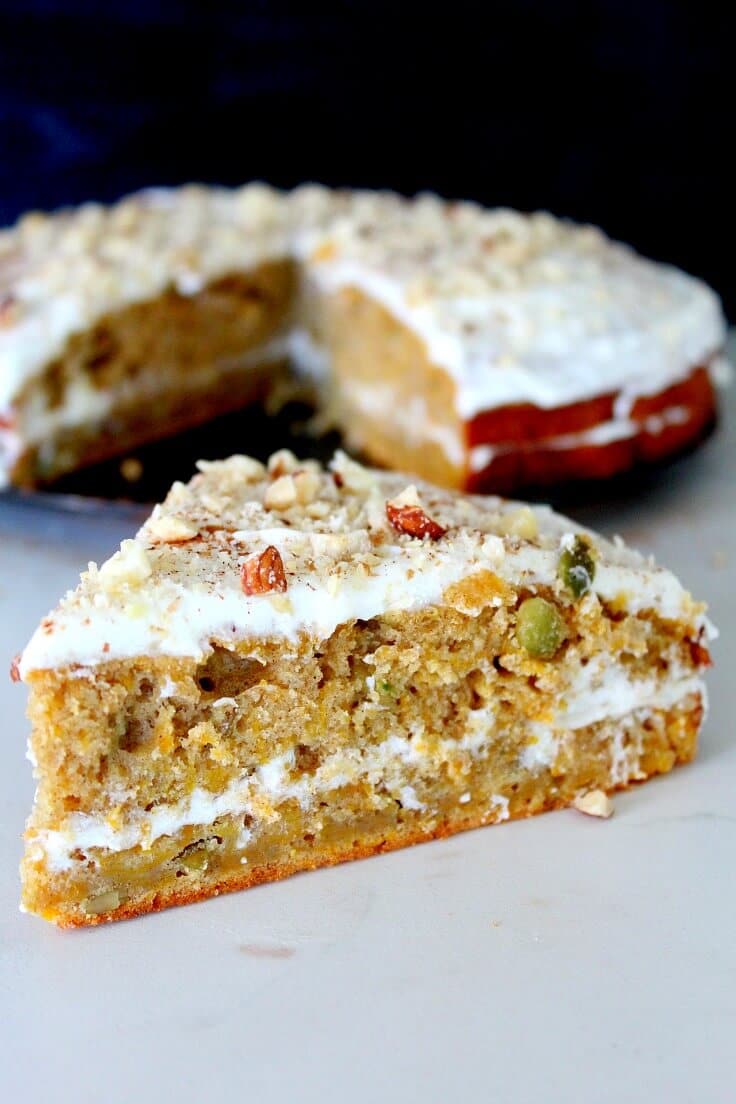
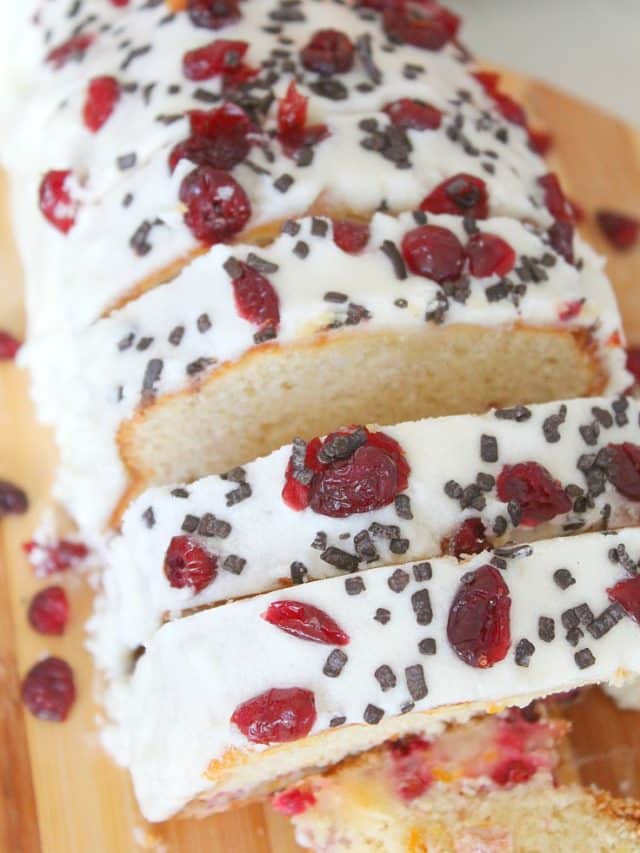
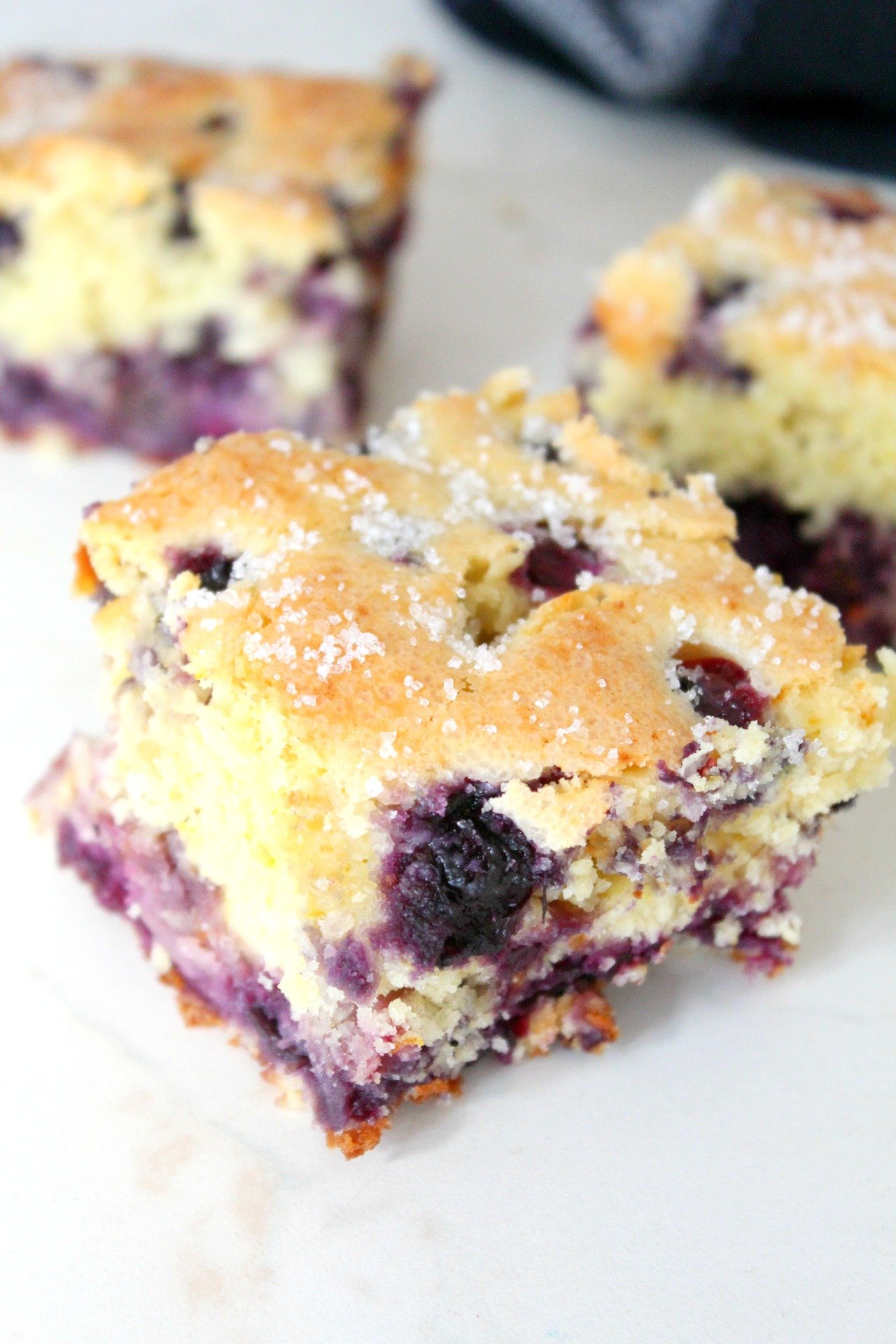
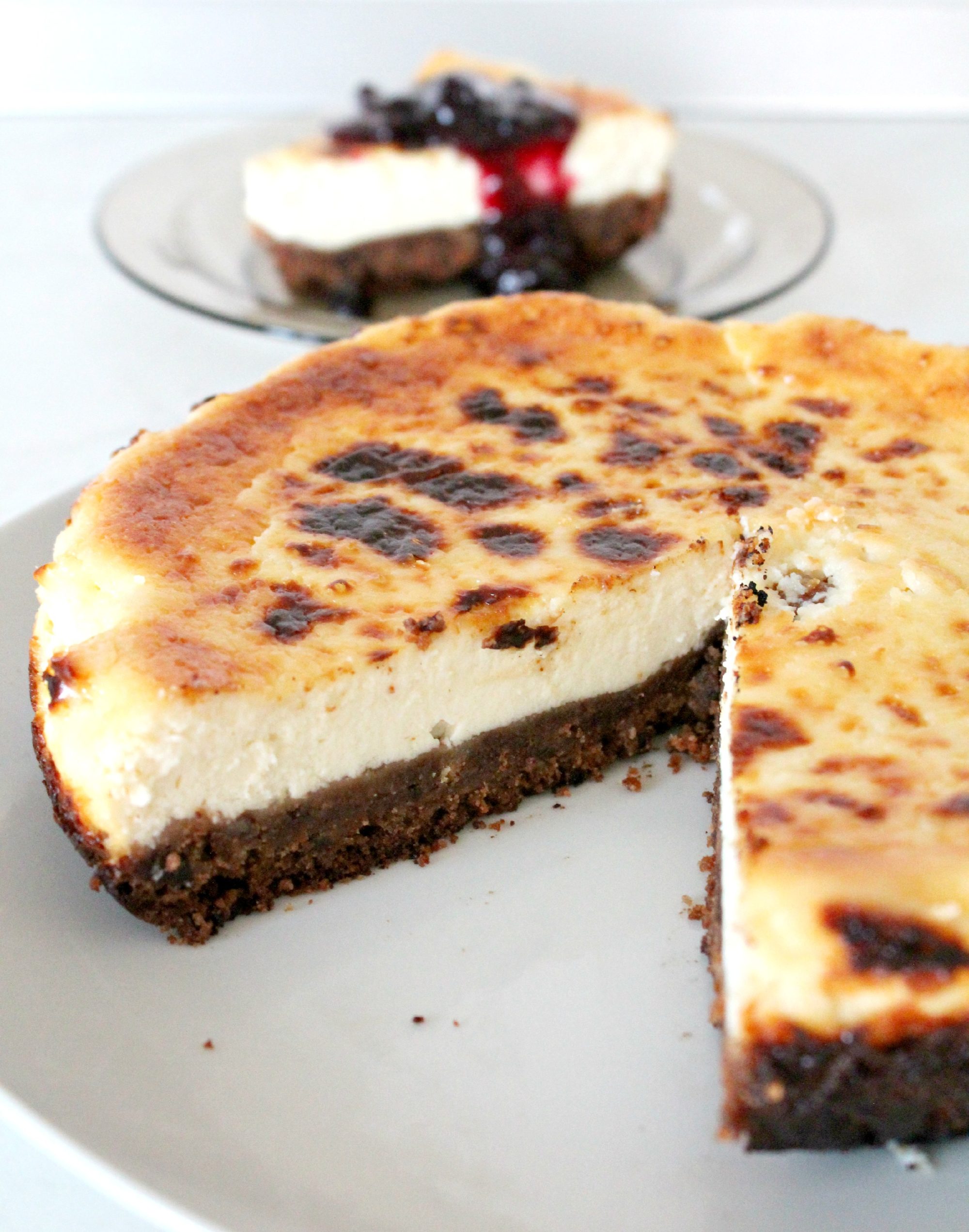
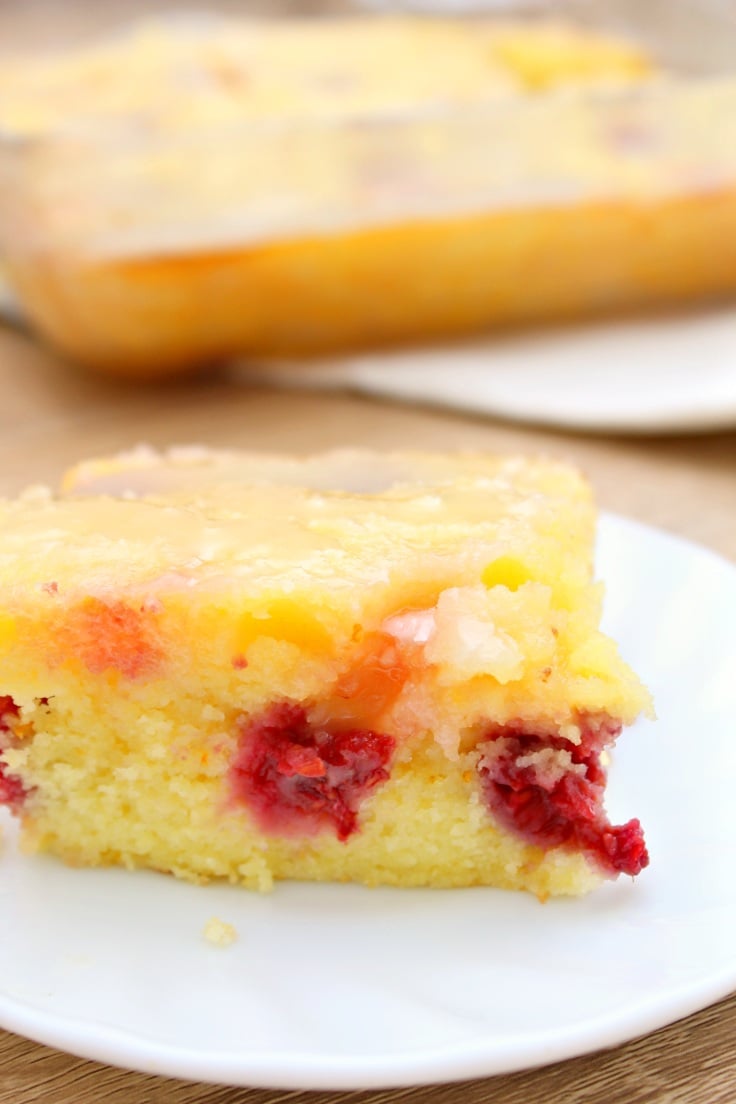
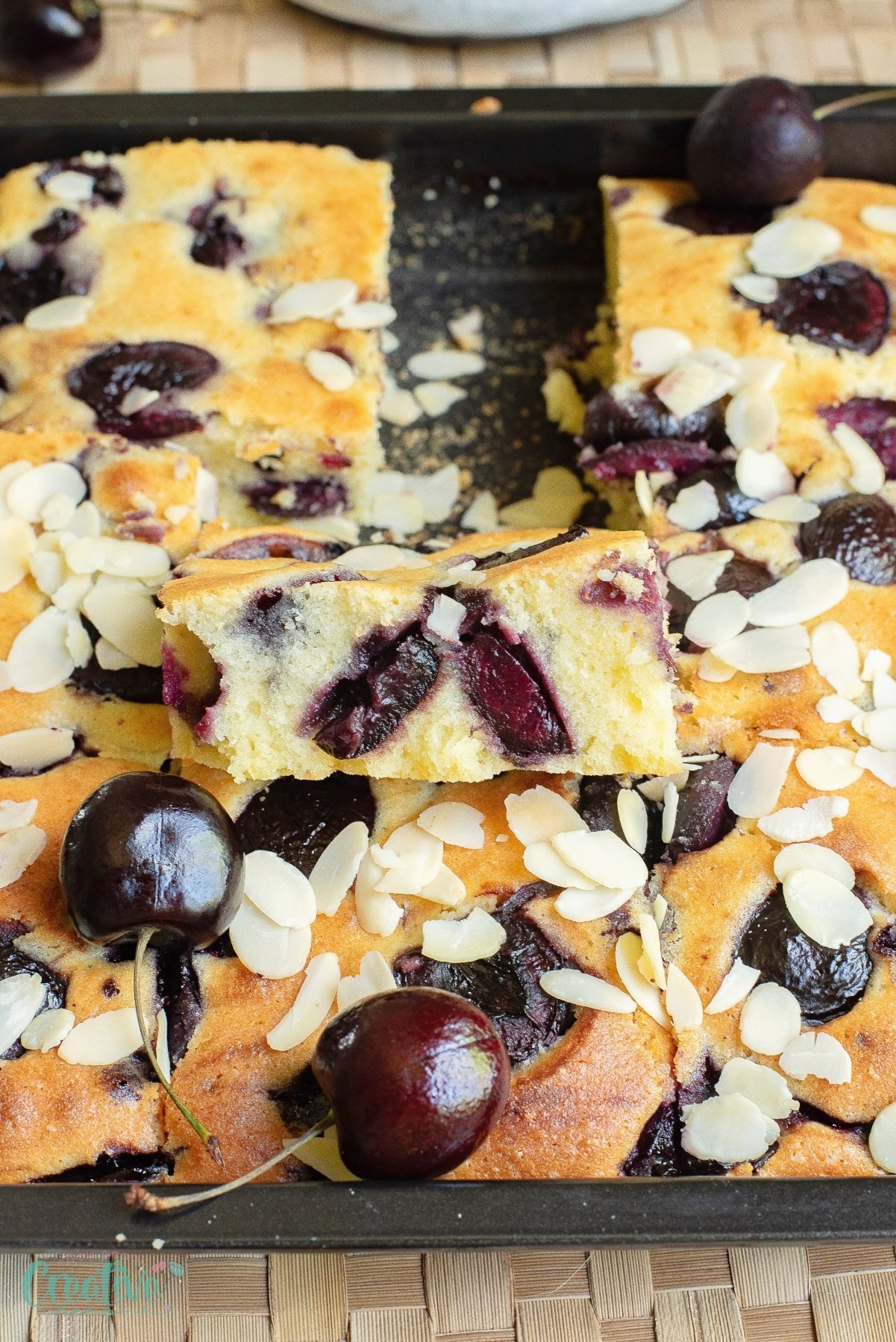


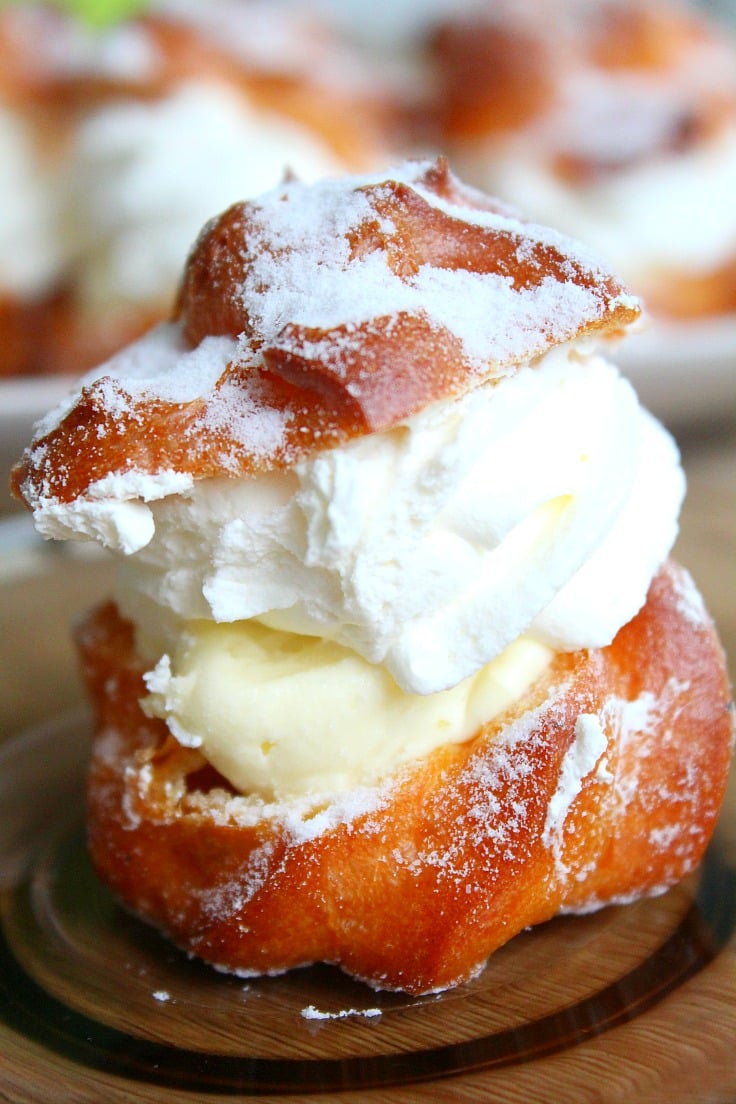
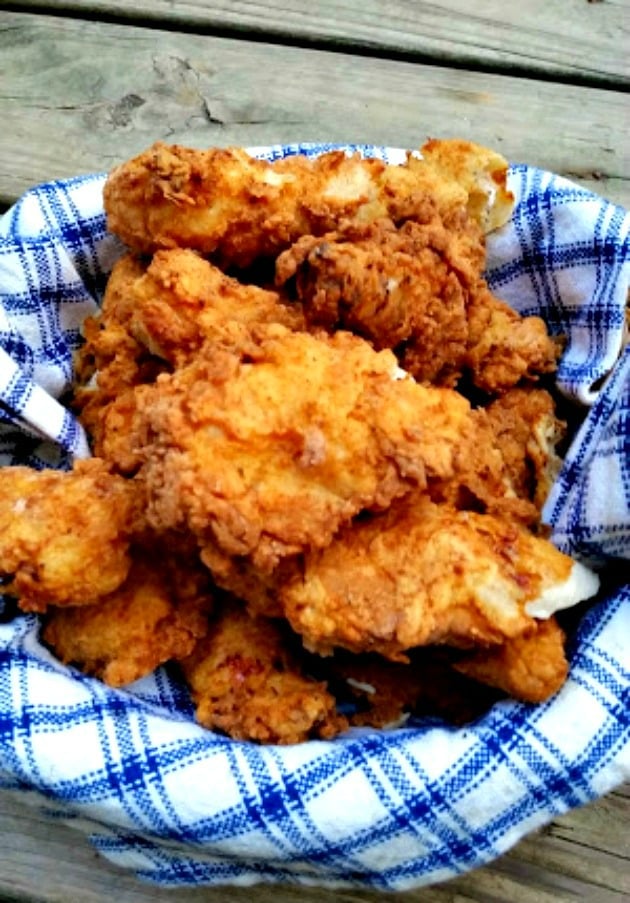
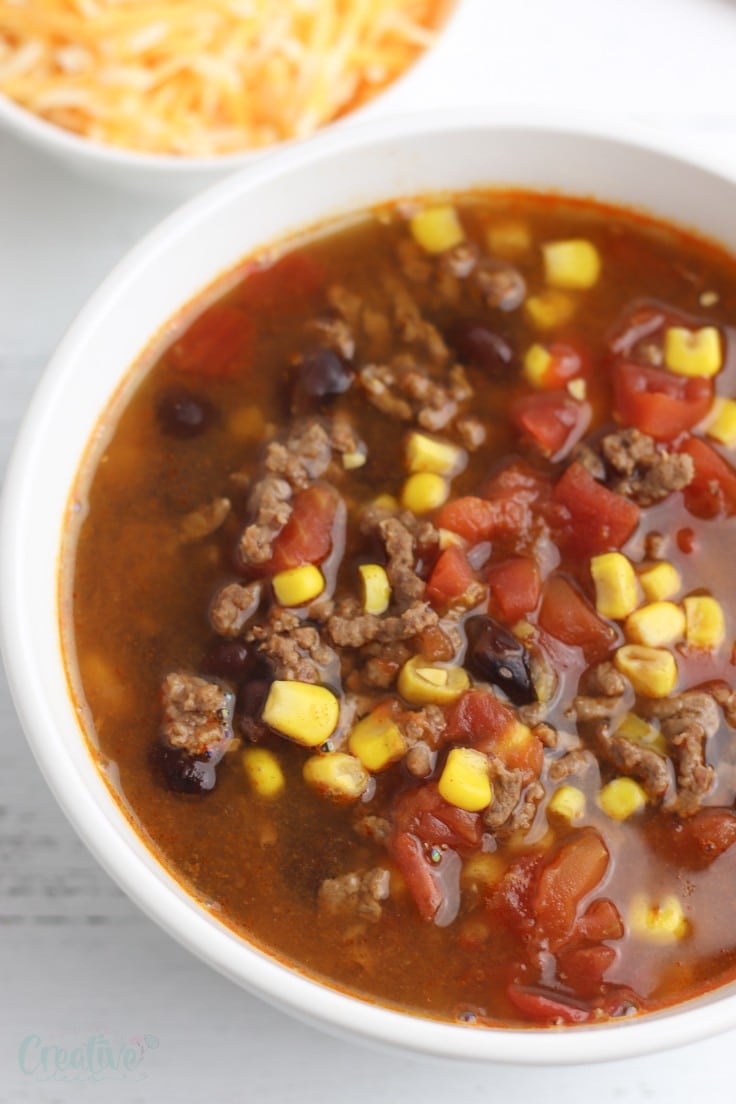
ABOUT PETRO
Hi, I’m Petro, author and founder of Easy Peasy Creative Ideas. Sewist, crafter, avid DIY-er, foodie, photographer, homemaker and mommy to one. I’m an expert at coming up with quick, clever sewing tips, recycling crafts and simple, easy recipes! You can find my ideas featured in reputable publications such as Country Living, Good House Keeping, Yahoo News, WikiHow, Shutterfly, Parade, Brit & Co and more. Thanks for stopping by and hope you’ll stay for a while, get to know me better and come back another time. Stick around for real fun projects! Read more…